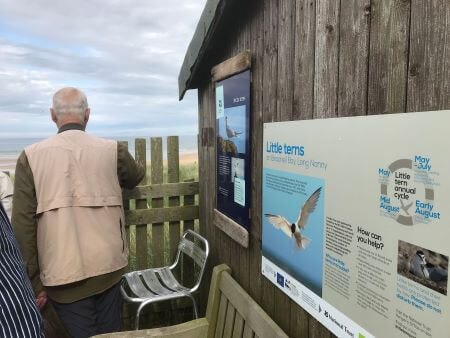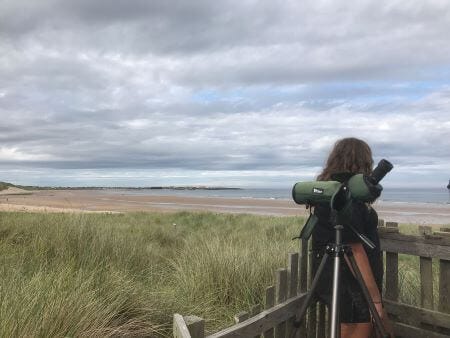Discovering rare seabirds at Beadnell Bay
Published: Wednesday 17th Jul 2019
We recently visited the Long Nanny seabird nesting site between Beadnell and Low Newton where we discovered one of the ultimate long distant migrants and a rare chattering seabird with an aerial courtship display.

Take a stroll to the southern end of Beadnell Beach to Long Nanny and you’ll find yourself in one of the best spots in the UK to see breeding terns. This protected part of the beach, which is currently cordoned off but can be observed from a viewing area, is a nationally important site for the preservation of Little Terns and home to a large breeding colony of Arctic Terns.
The National Trust has been protecting this area since 1977 and in that time the Little Terns have increased in numbers year on year. When we visited in early July there were 12 occupied Little Tern nests and an estimated 1500 Artic Tern ones. Storm Hector with its winds of up to 100mph saw the seabirds abandon all of their nests in mid-June but thankfully they returned and we saw a great number of them nesting and feeding.
Rangers stand sentinel over these birds, watching them 24 hours a day and camping out in the dunes during the three-month breeding season from May until early August. Their role is to chase away predators and rescuing nests from high tides, as well as providing an excellent resource to visitors who come to the viewing platform to see the birds. We were blown away by how informative the warden was and were delighted that we’d made the time to stop off and chat.

The Artic Tern, also known as the Sea Swallow, is white with a black cap. A long-distance migrant, it is a summer visitor to the UK and a winter tourist to the Antarctic. Its’ rarer cousin, the Little Tern is a noisy seabird with a yellow bill with a black tip. Males attract the females by calling and carrying a fish. The females then chase them high into the air before the male descends, gliding with his wings in a v shape.
In a world of fast paced media and a constant barrage of information, it was refreshing to be able to stand back and watch these birds in their natural habitat against the backdrop of the crashing waves and the sandy shore of Beadnell.

